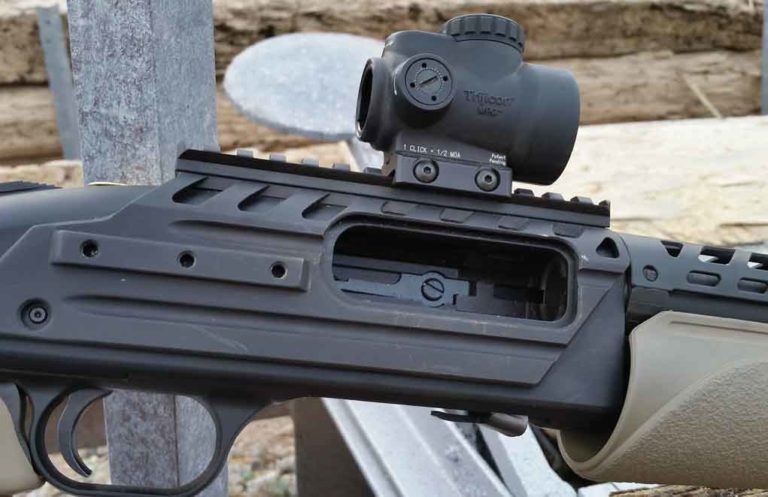
Here are the best tactical shotgun options for home and personal defense, plus the definitive guide on the weapons system.
The tactical shotgun still has a place in self-defense, even though its popularity has been supplanted by the meteoric rise of the AR-15. Really, the shotgun exists outside of the basic self-defense arena, which is dominated by the handgun. Because of its legendary reputation and brute power, the shotgun is more of an offensive weapon. It has been used in warfare since the invention of the powder which powers it, and the military is not usually in a defensive mission.
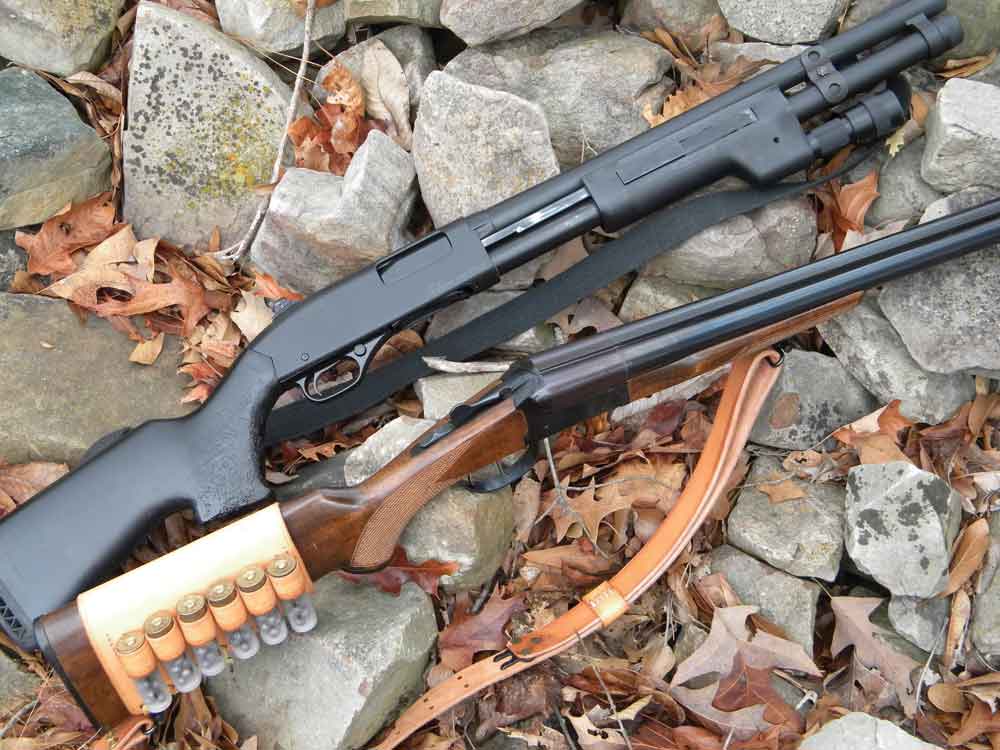
The shotgun is also the most versatile weapon out there. While it’s not always the best for every purpose, it can serve nearly every purpose requiring a firearm. For home and property defense, at close to moderate range, it is hard to beat the right type of shotgun. Also, a tactical shotgun may be legally obtained more easily than a handgun (as in Canada or Australia). But before we look at the best in class of this type of gun, let’s get into what actually makes a tactical shotgun.
Already know all this stuff? You can JUMP AHEAD to our picks for the best tactical shotguns.
What Is A Tactical Shotgun?
Table of Contents
Size
Gauge
Capacity
Pump-Action Vs Semi-Auto Shotguns
Tactical Weaponlights
Sights
Ammunition Selection
Shell Length
Recoil
Less-Lethal Rounds?
Tactical Shotgun Myths
Best Tactical Shotgun Options
A tactical shotgun can take several forms (there is no hard and fast definition), and also serve as a multi-role tool, especially if one lives on a farm or ranch, where it can serve animal control duties as well. Traditionally a standard hunting shotgun is used for this purpose, such as a Remington 870 Wingmaster, loaded with hunting loads, since the concept of a tactical shotgun is relatively new. While a weapon like this can suffice, there are some better shotgun configurations to work with.
Size
Yes, size does matter, but sometimes the biggest isn’t the best for everyone. A shotgun can be too heavy, kick too much, or penetrate too much. Some people can handle it and some can’t. Also, abilities change over time, for better or worse. That said, let’s talk size.
Like a law enforcement or military shotgun, the tactical shotgun should have a short barrel, 18.5 inches is the shortest civilian-legal length (outside of shotgun-style firearms, such as the Mossberg 590 Shockwave). Making it more agile, the shorter barrel keeps the gun maneuverable in close confines—such as a house.
Gauge
The gauge of choice for the tactical shotgun is almost universally the 12 gauge, but other gauges can work as well. The 20 is not a 12, but being on the receiving end of a load of 20 gauge buckshot or slug will certainly ruin your day. There is the added side benefit of being much more user-friendly than a 12 gauge for smaller-framed members of your family. A 20 gauge tactical shotgun is a great idea from the standpoint of maneuverability since, in home defense situations, you may use your shotgun to check the interior of your home.
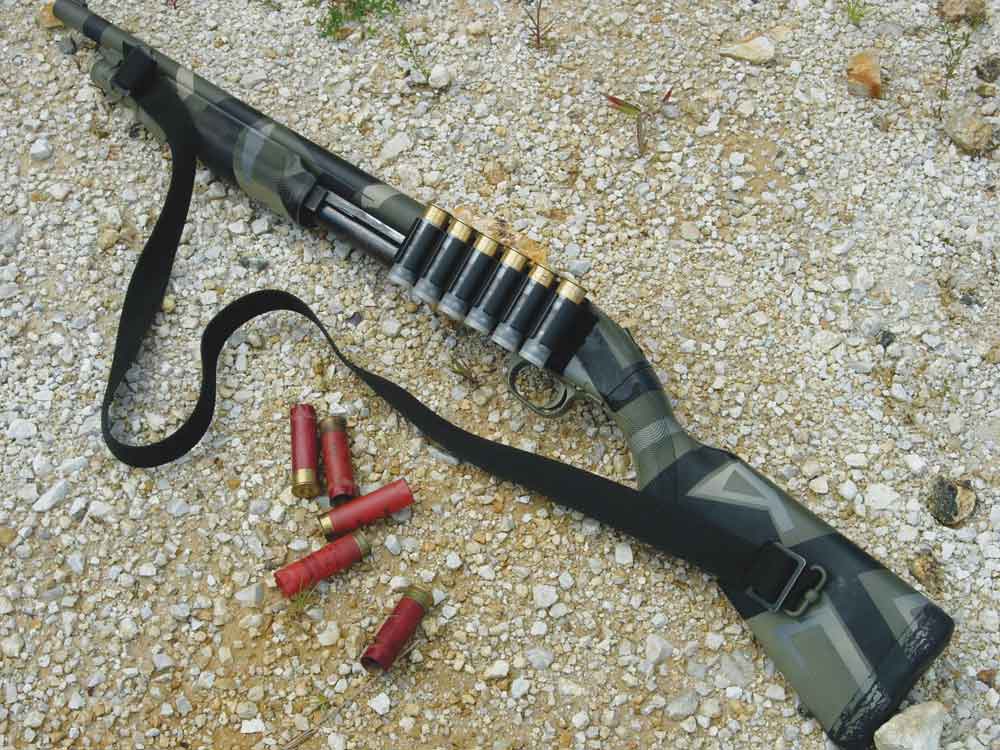
Capacity
Reloading in the middle of a gunfight is something no one relishes. Most standard Remington 870s or Mossberg 500s have a magazine capacity of four to six rounds (three and six in box magazine fed versions), which really should be enough. If you want a larger magazine capacity, that’s fine, but realize that the extra weight forward of an extended magazine tube slows down your swing and makes the weapon decidedly muzzle-heavy, as well as just heavy in general.
Pump-Action Vs Semi-Auto Shotguns
While there are some outliers, tactical shotguns come in two styles—pump-action and semi-automatic. Personally, I prefer semi-automatic shotguns—especially for hunting—given their quickness and ease of use, however, each action has its pros and cons.
The great advantage of pump-action shotguns is their versatility and affordability. No matter what you load into a pump—be it high wall, low wall, etc.—it will run it. This is a great advantage when you take the tactical shotgun out of a strictly defensive role. And they’re cheap to get into, often running $500 or less. Heck, the legendary Mossberg 500 can be had around $300 to $400. This means nearly any shooter can arm themselves well.
As for cons, pump-actions open the door to human error—in particular short-stroking in which the pump isn’t completely actuated and fails to cycle. Not good. Furthermore, they are slower shot to shot than a semi-auto.
We’ve established the semi-auto in most shooters’ hands is the faster option, however, there’s another advantage. Gas-operated shotguns also generate less recoil, which makes them less punishing in practice and improves their shot-to-shot accuracy.
The tradeoff, semi-autos are the more expensive option. Not across the board, there are solid affordable semis out there, but most options run $500 and north. Pick one up with an Italian accent, such as a Berretta, well you’re talking a definite champagne tab.
Additionally, semi-auto shotguns are sometimes picky about loads. Too light and it won’t cycle, which leaves you with a pretty intricate single-shot. Some of this has been cured in recent years with innovations such as Remington’s Versa Max and Savage’s Dual Regulating Inline Valve, but it’s a facet you’ll need to pay attention to when you go out shopping.
Tactical Weaponlights
There are several ways of attaching a tactical light which don’t necessarily require the use of a Picatinny rail, commonly found on the AR-15 system, which more and more tactical shotgun manufacturers are starting to add. There is the option of using a light-bearing forend such as the one offered by Surefire. These forend units, which are model-specific for pump or semi-auto, replace the original forend on the weapon and hold the tactical light and operation switches. The switches allow for thumb operation by both right- and left-handed users. There are models available in LED or incandescent bulb systems, with the LED versions far outnumbering incandescent versions. The LED is going to stand up to shotgun recoil much better than any incandescent bulb, and the lumen power is now right up there with the formerly dominant xenon incandescent systems.
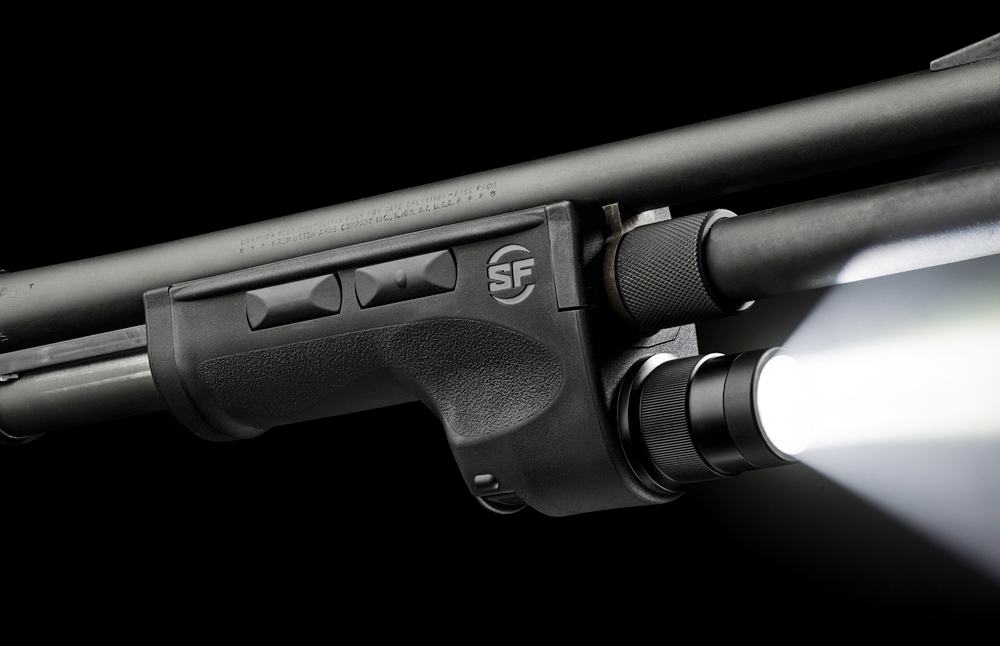
In addition to dedicated forend mounts, there are universal mounting systems available that can be affixed to the magazine tube to hold your light system of choice. These, however, usually require the use of a light that has an external wire leading to a pressure switch adhered to the forend by Velcro. This wire can catch on things. This may not be the best system available, but it is less expensive than the Surefire system and, since we are talking defense here and not dynamic entry on a SWAT team, the external wire mounting might not be an issue.
Sights
A single bead works okay for ranges of 15 to 20 yards when using buckshot on a full-size silhouette target. But for accurate fire, you are missing out on the precision capability of the weapon when you use a bead-sighted shotgun.
Shotguns can be very accurate with slugs and shots if you equip them properly and train with them. Remington’s rifle sights mounted on their shotgun are excellent, but ghost ring rear sights and red-dot optics can bring the system to another level.
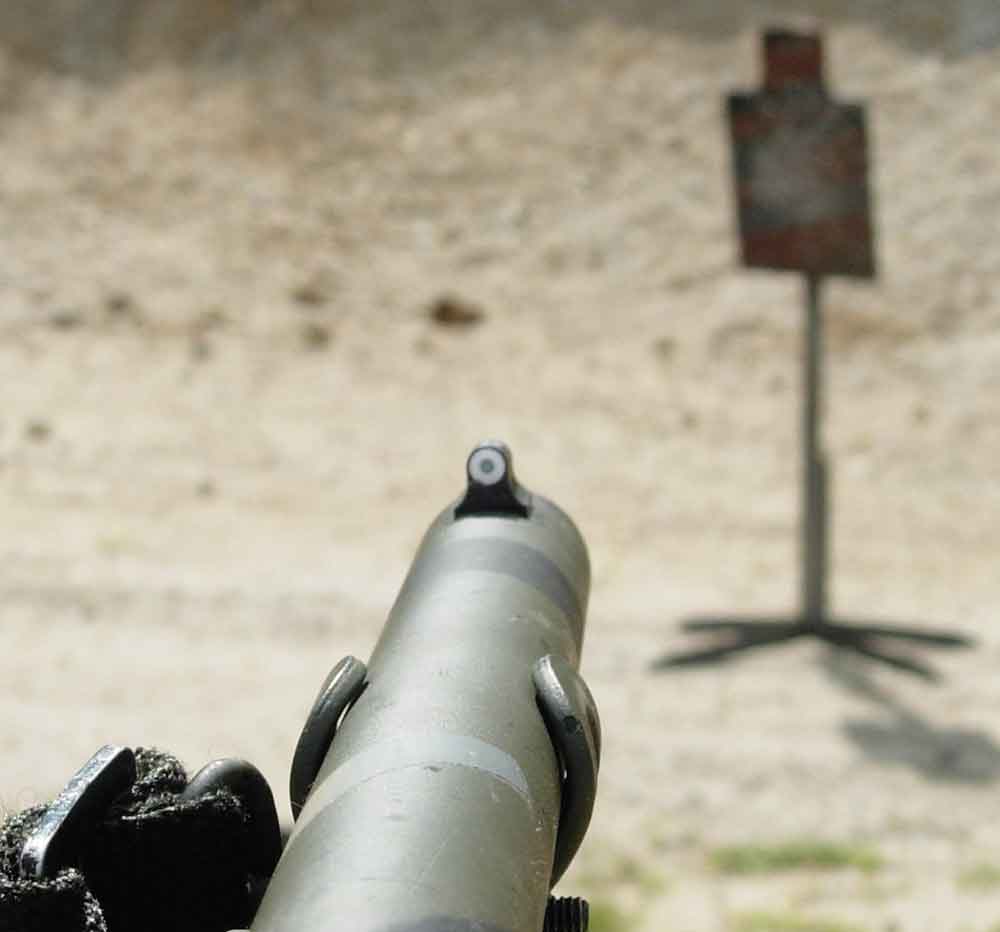
Ammunition Selection
Load selection for your tactical shotgun will depend on where you reside, or rather, what type of structure you reside in. Interior construction and location may even determine if a shotgun is a viable home and self-defense option. If you live in an apartment with paper-thin walls, or even a house or trailer with this type of construction, the shotgun may be totally out of the question due to over-penetration risk.
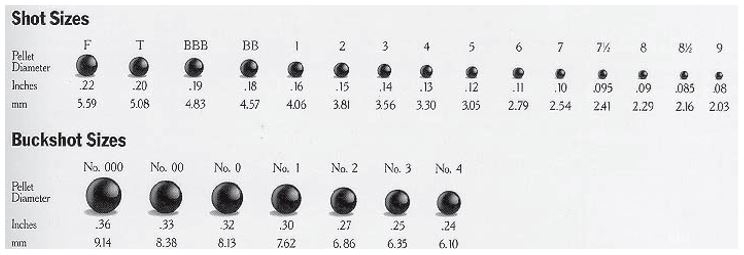
Birdshot
These are the shot on the upper part of the chart. Essentially, there are dozens to hundreds of these loaded into a shell, meant to increase your chances at hitting an airborne target on the move. Yes, they'll put a two-legged threat down, however, they are not the optimal choice. The shot loses velocity quickly, can have poor penetration qualities and in most circumstances isn't advisable for personal defense.
Buckshot
These are the shot on the lower part of the above chart. The pellets range in size from .24 inch to .36 inch and as their name implies were originally used to harvest deer. They still fill this role, but are generally the go-to option for tactical applications. Typically, 00—also known as “double aught”—is the most common, with a shell pitching nine pellets approximately the size of a 9mm or .38 Special bullet. The one concern tied to buckshot, particularly at the “aught” end of things is over-penetration—something to keep in mind if you envision the tactical shotgun as a home-defense tool.
Slugs
Again, the slug finds its genesis in hunting season and presently is the most used load for those who hunt medium to large game with a shotgun. The advantage of slugs, they extend the effective range of a shotgun and have absolutely devastating terminal ballistics. Weighting 1 ounce, slugs also do a job on drywall and other permeable barriers, a facet worthing considering.
Read Also: Styles Of Shotgun Slugs
Shell Length
Next comes shell length. The most commonly-used shell lengths, regardless of gauge, are 2-1/2 (.410 gauge only) to 2-3/4 (20 and 12 gauges) inches. These shells, depending on powder charge and shot type, are adequate for most any shotgun duties that the particular bore is capable of handling, from clay targets to deer, or larger close-range game when slugs are used. Magnums can be overkill both on the giving and the receiving end in most defensive encounters.
There is a 2-3/4-inch magnum load (same velocity, slightly heavier payload) but it is not commonly encountered. Beyond that is the 3-inch magnum round. A round is generally considered a “magnum” charge for the given gauge when it provides longer range, more power, a heavier payload, and/or, you guessed it, more recoil. For example, the standard 2-1/2-inch 12 gauge shell loaded with 00 Buckshot holds nine pellets. In the 3-inch magnum load, it packs 12 pellets and begins to become unpleasant to shoot.
Recoil
Speaking of recoil, here is a chart comparing recoil energy for various 20 and 12 gauge loads and how they compare. For load selection, this may help some of you who are a little overzealous with the “biggest is the best” mindset. Yep, you can handle the big loads for a few shots, but not for long-term practice, and you must practice with the rounds, or their direct equivalent, that you plan on keeping in your weapon.
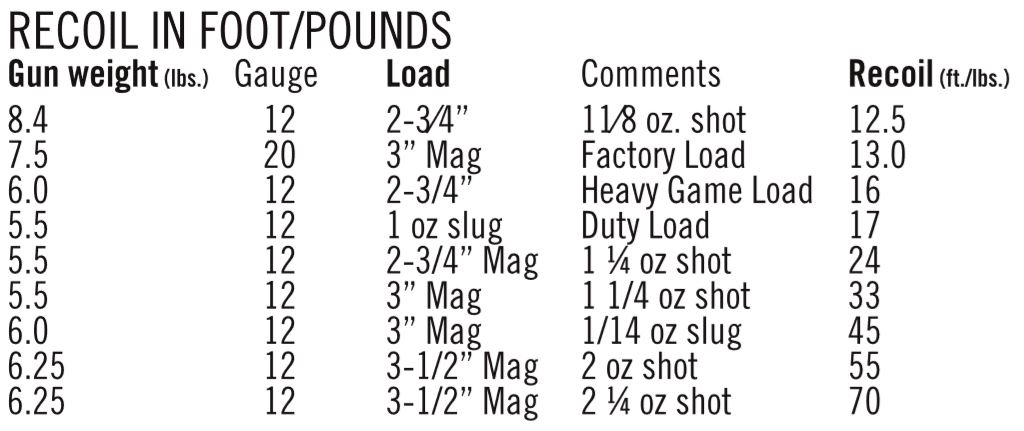
This is kind of a “beating” chart — it shows what kind of beating you will take based on gun weight and load. To understand foot-pounds, the measure of free recoil energy, we will use this definition: one foot-pound is a unit of work equal to the work done by a force of one pound acting through a distance of one foot in the direction of the force. In other words, one foot-pound is the amount of energy required to move a one-pound object (not including calculations of friction) a distance of one foot. 12.5 foot-pounds of energy is the amount of energy required to move a 12.5 pound object one foot and so on.
12.5 has always been given as the standard amount of free recoil energy for the 12 gauge, but, as you can see, when you change gauge, payload and shell length, you boost the amount of foot-pound recoil energy. The other factor involved in felt recoil in this list is the weight of the gun. What is not included in these calculations is action type, which is important, since a gas-operated semi-automatic shotgun (such as the Benelli M4 Tactical Shotgun) has reduced recoil over that of a pump or double in most cases.

Okay then, how much of a thumping do you want to take on the butt end of your defensive weapon system? How much can you take, while still being proficient and not developing a horrible flinch? How effective will your shots be? A 3 or 3-1/2 inch magnum in a six-pound shotgun for home defense in suburbia or Midwest rural areas? No. While traversing or living in grizzly country in Alaska? Sure, no problem, but in my house or on my property — no way. I want my shot to hit the first time, every time. I don’t want stray pellets or slugs endangering others. I don’t want a flinch developing. And maybe most importantly, I want to have fun shooting my guns.
Less-Lethal Rounds?
Even if you buy some of the new rubber pellet or bean bag “less-lethal” 12 gauge rounds, similar to law enforcement less-lethal rounds that are available to civilians, you can still kill or maim someone at close range, especially if you hit them in the head or throat. We now use the term “less-lethal” to describe intermediate weapons in law enforcement rather than “non-lethal” for precisely this reason. People can die due to any type of force being applied to them, so nothing is considered non-lethal in terms of force application.
If you can’t stomach the use of deadly force to preserve your own life, then maybe you can be prepared to use it in order to save your family. But if you feel you couldn’t take a life to save even your own family then you shouldn’t be using a lethal force weapon for defense to begin with. Instead, consider using a civilian C3 Taser or pepper spray.
Now that we have what makes up the tactical shotgun, let’s dispel some of the myths that revolve around the weapons system.
Tactical Shotgun Myths
Myth #1: The tactical shotgun is an “alley cleaner.” Fire one shot at a group of people and they all go down. Well, at least in the movies. Shot pellets in most choke configurations spread at a rate of one inch for every yard traveled. Seven yards is the standard assumed distance in interpersonal firearms combat. A seven-inch hole at that range means that you can miss your target or its vitals if you don’t aim. Remember that seven inches is an average for all shotgun barrels and ammo types. Depending on our choke and load, many combinations will shoot even tighter than that.
Myth #2: The tactical shotgun is easy to use and fire. In an old police training film from the late 1960s, the instructor, with his best John Wayne/Clint Eastwood attitude, says, “The shotgun doesn’t need to be aimed. With the shotgun, you can whirl, fire and blow the guy away.” This statement sounds cool, but now brings a laugh from police cadets when they see the tape. The fact is, you can’t go out and buy one of these wonder weapons, load it, and leave it in a corner or close at hand ready to go without practicing with it. The tactical shotgun requires work to master, and it is not for the recoil sensitive, at least in its 12 gauge configuration. You cannot fear or dread this weapon. You have to embrace it and make it an extension of yourself — zen-like but true. If you are using a shotgun for self-defense, you must be able to hit the target you are facing without endangering others.
Myth #3: The tactical shotgun is an infallible “stopping weapon,” guaranteed to take down the largest attacker with ease. Many people think that if you hit the bad guy with a shotgun round, it’s gonna kill him instantly and blow him six feet backwards to boot. Well, no. Remember, your shot pattern may be no more than an inch wide when it hits the intended threatening target and can easily miss the vitals, which would fail to stop a determined opponent. Shotguns can fail to stop the aggressor — it’s happened. This also means that a shotgun hit is not always fatal. Many people survive. Sure, it’s way better than a handgun in a fight, and usually a better choice, it just isn’t guaranteed. Nothing is.
In Summery, What You Want In A Tactical Shotgun:
- 18-inch barrel
- Chambered 12-gauge or 20-gauge
- Mininum of 4+1 round capacity
- Sights or optic
- Ability to change out chokes
- repitable manufacture and a quality build that doesn't require aftermarket upgrads
Now that we have a handle on the platform, what makes it up and what it can and can't do, let's check out the best tactical shotguns currently available.
Best Tactical Shotgun Options
Mossberg 590A1 Tactical

Given the foggy future of the Remington 870, the 500 Series is the undisputed king of the pump-action hill. Not that many shooters didn’t already have it there previously. The smoothbore is battle-tested, having filled enumerable military and law-enforcement roles, and is as dependable as a well-trained dog. Not always the case, nowadays all of Mossberg’s tactical models are 590—special-purpose models of the original 500. Of the off-the-shelf sections, the 590A1 comes with everything you could want, from ghost-ring rear sight to 6+1 capacity. Its heavy-walled barrel takes a lot of abuse, giving you the peace of mind the 590 won’t flop under testing conditions. Additionally, there are 11 variations of the shotgun with some excellent features some might find better fit their needs. Best of all, nearly anybody can afford to get into one of the best tactical shotguns ever conceived. MSRP: Starting at $727
Stoeger M3000 Freedom Series Defense

Turkish shotguns, in many cases, have a deservedly shaky reputation. The decided exception being Stoeger, which under the ownership of Benelli has become synonymous with affordable quality. When it comes to semi-auto tactical shotguns that description fits the M3000 Freedom Series to a tee. Inertia driven (there is an explanation here about the mechanism), the gun is light and agile, plus clean running. We’ll confess, it’ll thump a bit more with heavy loads compared to a gas gun, but you’ll find inertia’s run faster. Not a bad tradeoff. You won’t want for firepower either, with the gun coming with an 7+1 capacity standard. Ghost ring rear sight, blade front sight, adjustable length of pull, optional Weaver scope base—the M3000 has a lot of positives. There’s a nit to pick, however, the gun has a fixed cylinder choke. No big shakes if the aim is a strictly defensive gun, but hems its versatility if your aim is more at a survival tool. MSRP: Starting at $619
Kalashnikov USA KS-12
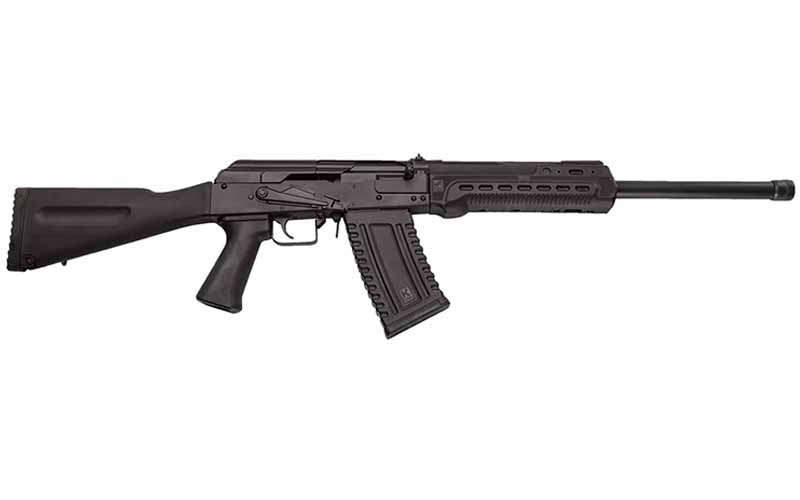
The Kalashnikov is a proven platform for shotguns. They have been appreciated and used by law enforcement, military, civilian sports shooters and hunters since they were first introduced in the early 1990s. While they were still being imported, the Russian-made Molot Vepr-12 was the established king of 12-gauge tactical AKs but was sanctioned from import in 2017. If you can still find a Vepr for a decent price, that’s the real one to hunt for on the secondhand market. As far as newly produced and available AK shotguns go, the current best choice is KUSA’s KS-12. Offering better build quality and higher average customer satisfaction than the Chinese or Turkish versions, the KS-12 is an American-made Saiga-12 clone that comes in the gun’s ideal configuration straight from the box. Whether your 12-gauge needs are for home-defense, SHTF or 3-gun competition, the KS-12 has all of the AK’s best features to offer in a shotgun platform. It reliably cycles with a variety of loads and is fed by detachable 10-round box magazines. It comes ready to mount optics and muzzle brakes, and the KS-12TSFS variant also includes a folding stock, making this a true tactical option. MSRP: $856.80
Beretta 1301 Tactical

While it doesn’t get the credit of other Italian tactical shotguns, the 1301 is an unassailable system. It should be, Beretta has been turning out shotgun since before America was a country. This is apparent in the little things the company includes on the 12-gauge, from an adjustable length of pull to a rounded loading port (no mutilating your thumb on reloads). The scattergun is versatile too, able to digest light load, heavy loads and everything in between. This is thanks to Beretta’s BLINK gas operating system that’s designed to digest almost every off-the-shelf load. To boot, it’s fast—the company claims the fastest, but I don’t have split times to plead their case. The ergonomics of the gun are traditional but very comfortable and intuitive. And the controls are well proportioned, making manipulating the gun easy. Personally, I would have liked better than 5+1 capacity, but with all its other assets that’s far from a deal-breaker. MSRP: $1,720
Benelli M4
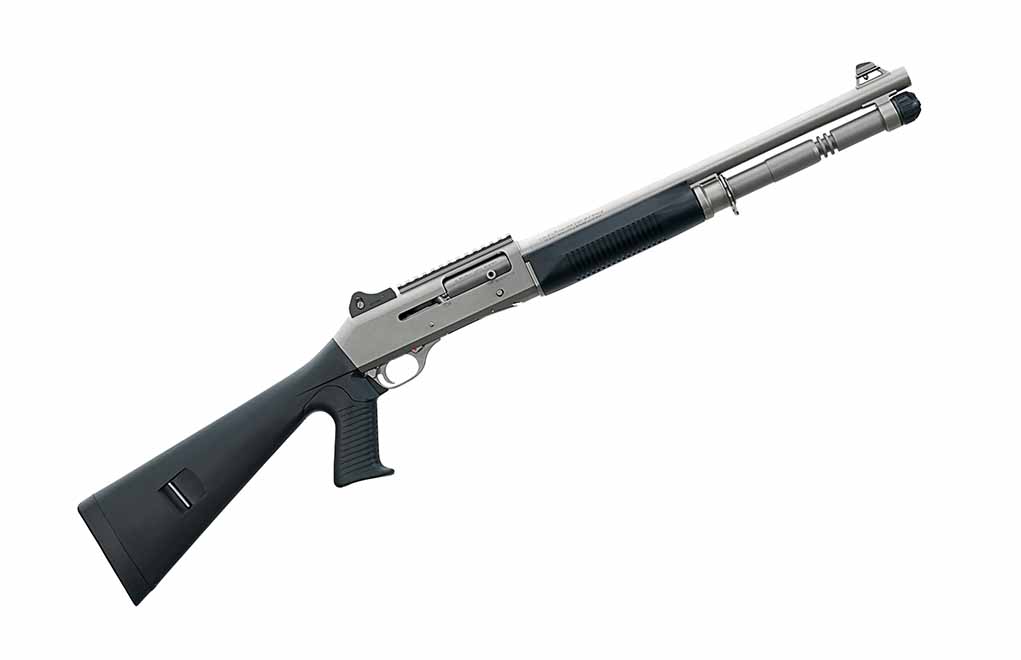
If you’re after a truly battle-hardened option, this is it. With users from U.S. Marine Corps to the SAS, and other pros, the M4 certainly has the resume of “best tactical shotgun”. But what makes it so special? More than anything, it's ARGO (Auto Regulating Gas Operated) system. Basically, the gun was specially designed for the Marines, who had trepidations about adopting a semi-auto. Thus, Benelli whipped up the ARGO, which improves reliability by taking gasses further up the barrel than normal. Essentially, it’s cleaner gas, that reduces fouling. It can digest thousands of rounds between cleanings. And it’ll keep fighting through swamp mud or an arctic freeze. Pretty nice assets. Furthermore, it’s simpler and lighter than most gas systems. But is it worth its top-shelf price? Depends. If your answer is, I need something to survive the end of the world, then yes. But if it’s, I need to defend hearth and home, it might be overkill. MSRP: Starting at $2,099
Remington 870
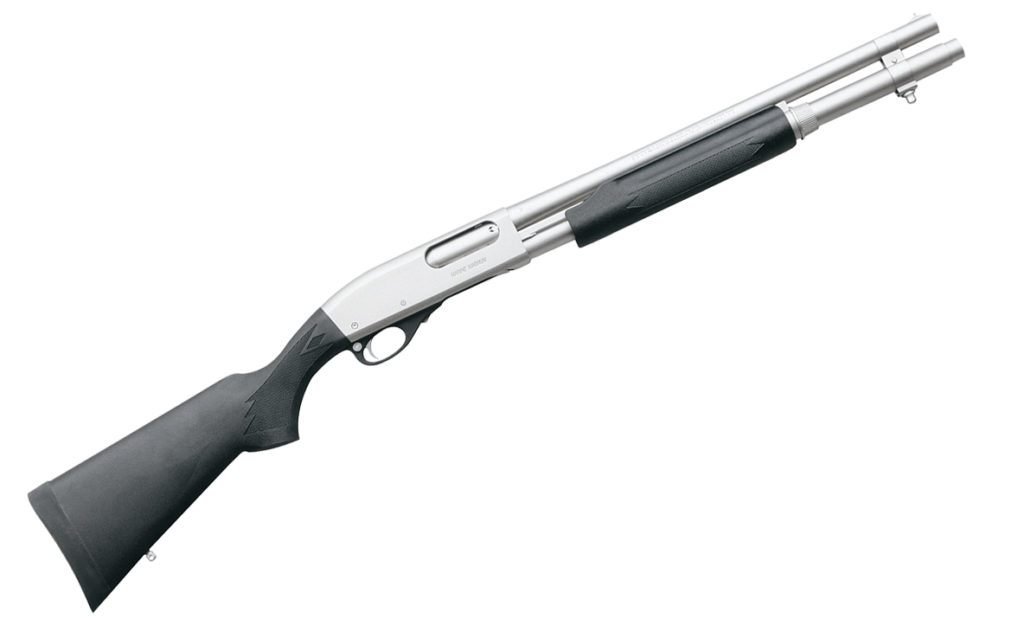
An oldie, but a goodie. When it comes to pump-action shotguns, there are few more classic, trusted and reliable options than the legendary 870. Its twin action-bar design set the standard for unfailing cycling and the gun itself is all but bulletproof. And affordable. Basic 870 models can still found in the $350 range. While Remington had turned out several tactical models in the past, most are gone from their present catalog since the company’s sale in the fall of 2020. Presently dominated by hunting variants, if you want a fancier tactical model, you may have to check the secondhand market for the time being. Otherwise, more basic configurations like the 870 Tactical are still available and affordable. MSRP: Starting at about $500
Editor's Note: This is an excerpt from Gun Digest Book of Tactical Shotguns. Elwood Shelton and Adam Borisenko contributed to this post.
Discover the Best Shotguns for Every Purpose
- Best AR Style Shotgun – A Comprehensive Review
- Best 410 Pump Shotgun – A Buyer's Guide
- Best Over Under Shotgun – Affordable Doubles
- Best Home-Defense Shotguns
- Double Barrel Shotgun Reviews – Affordable Doubles
- What is an 8 Gauge Shotgun ? Everything You Need to Know
- Lever Action Shotgun Reviews: The Past, Present And Future
- The Best Pump Action Shotgun Guide
- Bullpup Shotgun Buying Guide – Best Options for Self-Defense

Next Step: Get your FREE Printable Target Pack
Enhance your shooting precision with our 62 MOA Targets, perfect for rifles and handguns. Crafted in collaboration with Storm Tactical for accuracy and versatility.
Subscribe to the Gun Digest email newsletter and get your downloadable target pack sent straight to your inbox. Stay updated with the latest firearms info in the industry.

![Best Concealed Carry Guns In 2025 [Field Tested] Wilson Combat EDC X9S 1](https://gundigest.com/wp-content/uploads/Wilson-Combat-EDC-X9S-1-324x160.jpg)


![Best 9mm Carbine: Affordable PCCs [Tested] Ruger Carbine Shooting](https://gundigest.com/wp-content/uploads/Ruger-Carbine-Shooting-100x70.jpg)
![Best AR-15: Top Options Available Today [Field Tested] Harrington and Richardson PSA XM177E2 feature](https://gundigest.com/wp-content/uploads/Harrington-and-Richardson-PSA-XM177E2-feature-100x70.jpg)

the mini-shells are also an option…and will increase shell capacity…but feeding issues do remain..Mossberg (with an adapter)…seems to be the best choice for these..
)
What about the Mossberg tactical autoloaders? The Jerry Micalek models are incredible.
To have an article about tactical shotguns that doesn’t cover them is a shame.
I wish they’d bring the Remington 887 Tactical shotgun back. It’s the coolest-looking shotgun ever made and had everything required for a tactical shotgun. It’s a shame it was done in by one bad batch and one bad review.
C’mon Remington.
model 37 ithaca american made 20 gauge under 6 lbs john browning design n has saved my life from being killed i owe it every thing
I have an M! Benelli. ‘Nuff said!
Love to Shot Shotgun Best Guide
One question the article does not address: options for the left handed. A few makers produce left handed autos, but almost all are bird guns. You may be able to have a gunsmith cut the barrel down, or order a smoothbore slug barrel in some cases. Mossberg’s left handed 500 appears to have been discontinued. In pumps, that leaves kel Tec (the best choice in my opinion), Black Aces, and Ithaca. All are 12 gauge, so no joy for the recoil sensitive. Beyond that, there’s the double barreled coach gun. I was lucky enough to stumble across a Browning BPS High Cap back in 2009, when Browning gave up on the police market and dumped the inventory they had left into the civilian market. I’ll never willingly part with it.